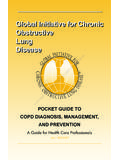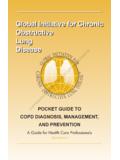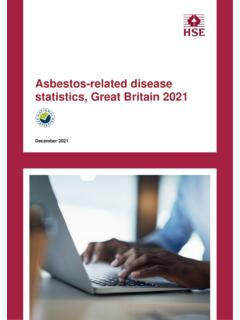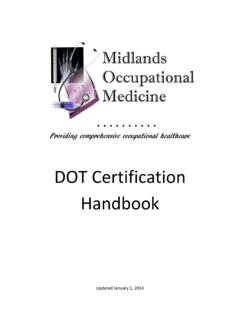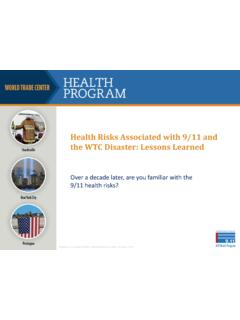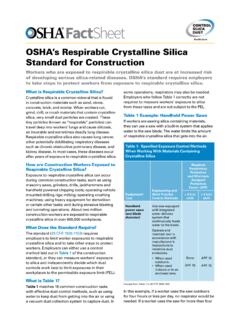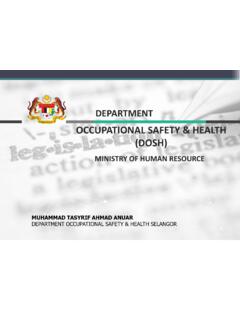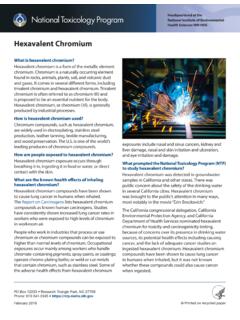Transcription of SPIROMETRY FOR HEALTH CARE PROVIDERS Global …
1 1 SPIROMETRY FOR HEALTH care PROVIDERS Global Initiative for Chronic Obstructive Lung disease (GOLD) CONTENTS I. INTRODUCTION II. BACKGROUND INFORMATION A. What Is SPIROMETRY ? B. Why Perform SPIROMETRY ? C. SPIROMETRY in Primary care D. Screening for Airway Obstruction in Primary care E. Recognizing COPD III. USING SPIROMETRY IN CLINCIAL PRACTICE A. Types of Spirometers B. Information Provided by the Spirometer C. Diagnosis of Airway Obstruction Figure 1. GOLD Spirometric Criteria for COPD Severity IV. SPIROGRAM INTERPRETATION A. Normal Lung Function Figure 2. Normal Spirogram: Volume-Time Curve B.
2 Bronchodilator Reversibility Testing in COPD C. Patterns of Spirometric Curves Figure 3. Volume-Time Curves (before and after bronchodilator) Figure 4. Features of Ventilatory Abnormality in SPIROMETRY Figure 5. Patterns of Ventilatory Abnormalities D. Flow-Volume Measurement V. PERFORMING SPIROMETRY A. Preparing the Patient Figure 6A. Normal Flow-Volume Curve Figures 6B, 6C, 6D. Patterns of Flow-Volume Curves Showing Ventilatory Abnormalities B. Measuring FEV1, FVC, and Flow-Volume Curves C. Differential Diagnosis VI. TROUBLESHOOTING A. Accuracy and Quality of Readings Figure 7.
3 Examples: Poorly Performed Curves B. Equipment Maintenance and Calibration C. Infection Control D. When to Refer for Further Respiratory Function Testing REFERENCES 2 I. INTRODUCTION Chronic Obstructive Pulmonary disease (COPD) is a clinical diagnosis that should be based on carefully history taking, the presence of symptoms and assessment of airway obstruction (also called airflow limitation). The GOLD international COPD guidelines1, as well as national guidelines2, advise SPIROMETRY as the gold standard for accurate and repeatable measurement of lung function. Evidence is emerging that when SPIROMETRY confirms a COPD diagnosis, doctors initiate more appropriate treatment.
4 SPIROMETRY is also helpful in making a diagnosis in patients with breathlessness and other respiratory symptoms and for screening in occupational environments. Although the use of spirometers in primary care is increasing, in some countries uptake is still low. In those countries where SPIROMETRY is in more common usage, there are major concerns regarding the technical ability of operators to perform the test and interpret its results. Many primary care physicians , nurses, and other HEALTH care PROVIDERS have had little formal training in SPIROMETRY . More accredited courses are appearing but these are often time consuming and fairly expensive.
5 Many clinicians feel apprehensive about purchasing a spirometer because of uncertainties about performing and interpreting SPIROMETRY . Epidemiologic studies confirm that both late diagnosis and under-diagnosis of COPD are common problems that wider use of SPIROMETRY could help to address. There is therefore a considerable need to: Encourage the use of spirometers in primary care Explain the importance of SPIROMETRY in the management of COPD Provide information on how to perform SPIROMETRY correctly Explain interpretation of SPIROMETRY results Most guidelines recommend the use of spirometers that provide a real-time trace to help assess the quality and repeatability of blows.
6 Such spirometers tend to be quite expensive and expectations that these could be used widely in poorer countries are unrealistic. Cheaper substitutes are available at relatively low cost; these can provide the basic indices accurately but give little indication as to how well patients perform the test. II. BACKGROUND INFORMATION A. What Is SPIROMETRY ? SPIROMETRY is a method of assessing lung function by measuring the volume of air that the patient can expel from the lungs after a maximal inspiration. The indices derived from this forced exhaled maneuver have become the most accurate and reliable way of supporting a diagnosis of COPD.
7 When these values are compared with predicted normal values determined on the basis of age, height, sex, and ethnicity, a measure of the severity of airway obstruction can be determined. It is on these values that COPD guidelines around the world base the assessment of mild, moderate, and severe disease levels. SPIROMETRY is however only one way of interpreting COPD disease severity. Other measures, such as the MRC dyspnea scale for measuring breathlessness, exacerbation frequency, body mass index, quality of life assessment, and exercise capacity all help to build a more complete picture2. 3 B.
8 Why Perform SPIROMETRY ? SPIROMETRY is the best way of detecting the presence of airway obstruction and making a definitive diagnosis of asthma and COPD. Its major uses in COPD are to: Confirm the presence of airway obstruction Confirm an FEV1/FVC ratio < after bronchodilator Provide an index of disease severity Help differentiate asthma from COPD Detect COPD in subjects exposed to risk factors, predominantly tobacco smoke, independently of the presence of respiratory symptoms Enable monitoring of disease progression Help assess response to therapy Aid in predicting prognosis and long-term survival Exclude COPD and prevent inappropriate treatment if SPIROMETRY is normal SPIROMETRY has many other applications in assessing and managing respiratory disease .
9 These include measuring the presence and severity of restrictive lung defects, screening of the workforce in hazardous occupational environments, pre-employment screening for certain occupations, and assessing fitness to dive. Some believe it may be useful as a motivating tool to help smokers to quit, but solid scientific evidence on this point is lacking at present, and research findings have been equivocal. C. SPIROMETRY in Primary care The development of COPD is slow and insidious and symptoms tend to be noted by patients only after there has been a significant loss of lung function, often to 50-60% of predicted value.
10 People with COPD often present far too late to their doctor because they accept cough or mild breathlessness as a normal result of years of smoking or because they do not wish to be told that they have to stop smoking. However, stopping smoking is key. It is the most important way of slowing disease progression, and it is most beneficial in the early stages of COPD. COPD is markedly under-diagnosed, with recent estimates of between 25 and 50% of patients with clinically important disease being undetected or misdiagnosed. Although awareness has increased in the last 10 years, the management and diagnosis of COPD in primary care is still poor.

